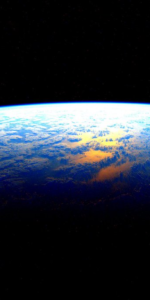
A time-sensitive mission to explore the planet Mercury, already delayed several times, may force the European Space Agency (ESA) and Arianespace to push back the launch of NASA’s multi-billion dollar James Webb Space Telescope (JWST) into early 2019.
The mission, named BepiColombo, is currently scheduled to launch on the same rocket, the Ariane 5, from the same spaceport in French Guiana, during the same timeframe that the JWST is scheduled to launch (October 2018).
A launch delay to BepiColumbo won’t impact the science of the ESA/Japan Aerospace Exploration Agency (JAXA) mission, but it would translate to a longer journey to Mercury. The last launch delay, which pushed it from April 2018 to October 2018, also translated to a year longer voyage to reach Mercury, now expected to arrive in 2025 instead of 2024.

An 8-week launch window opens for BepiColumbo on October 5.
JWST, meanwhile, can afford to wait a little while, its L-2 “gravity island” is not going anywhere.
“ESA and Arianespace will resolve the launch date conflict,” said NASA in a statement. “NASA and ESA are monitoring their respective mission remaining activities prior to launch. If BepiColombo is manifested for the October 2018 launch, Webb’s launch windows retain enough flexibility that it could launch only a few months later than originally scheduled.”
“We look forward to working collaboratively with ESA to meet the needs of both of these important missions,” added the space agency.
A decision is expected next month, when officials from Arianespace meet with NASA/JWST and ESA/BepiColumbo mission managers.
Meanwhile, the telescope itself is currently at Johnson Space Center (JSC) in Houston, TX, where it is undergoing 93 straight days of around-the-clock thermal vacuum testing in “Chamber A”, a U.S. National Historic Landmark and the largest high-vacuum, cryogenic-optical test chamber in the world.

The testing will verify its performance as an end-to-end system, and prove its sensitive optics and instruments will perform as planned in space, because there’s nobody to call and make repairs if something breaks or doesn’t work 1 million miles away.
You can watch the telescope come together and see it being tested at any time thanks to NASA’s “Webb-cam”, which is mounted facing Chamber A. There’s no view of Webb inside the chamber during testing, but there will be much activity in the cleanroom once Webb is retrieved:
– http://jwst.nasa.gov/, larger views of the cams available at: http://jwst.nasa.gov/webcam.html.
.
Be sure to “LIKE” AmericaSpace on Facebook and follow us on Instagram & Twitter!
.
Missions » James Webb Telescope »





Reliable Sources have said we will be able to see the continents of exo-planets …What will that mean?